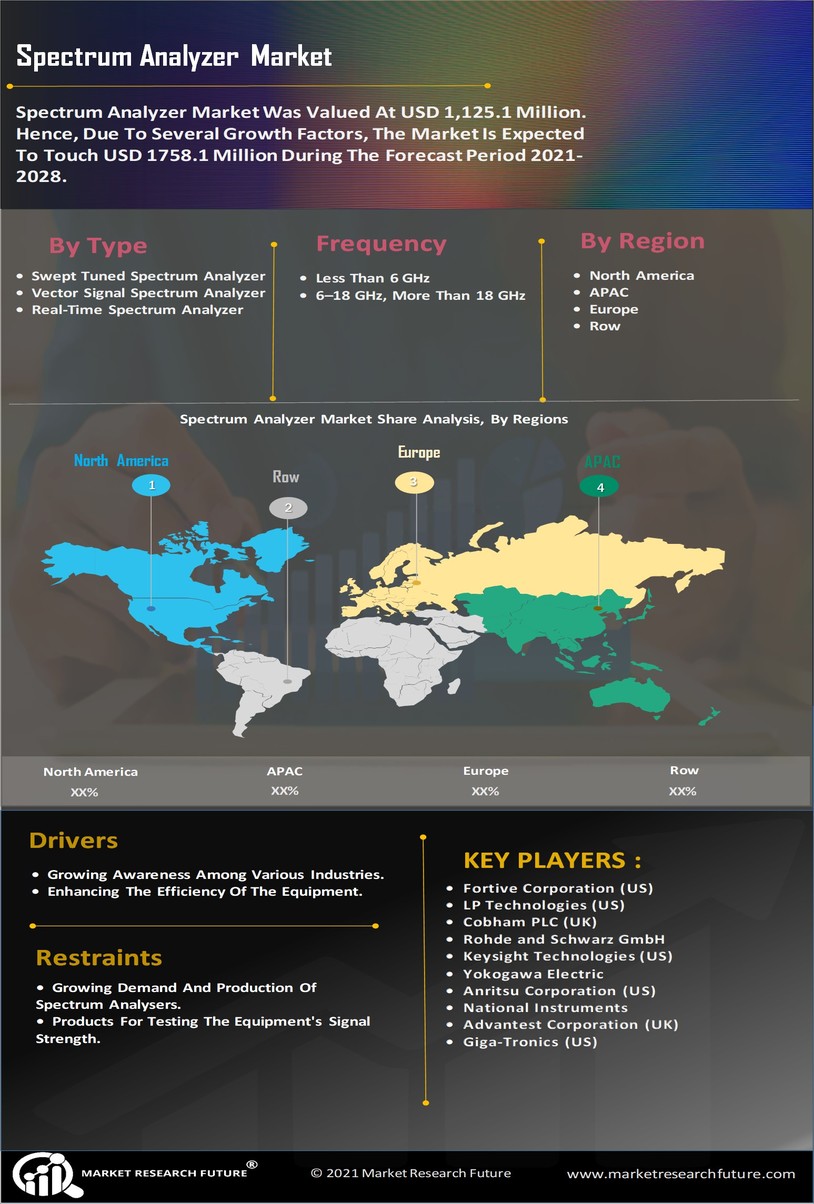Understanding Spectrum Analyzers: Key Features and Uses
A spectrum analyzer is an essential tool used in various fields, including electronics, communications, and broadcasting. It allows users to measure the power levels of signals across a range of frequencies. By providing a visual representation of a signal’s frequency spectrum, it helps in detecting interference, distortion, and signal strength, enabling engineers to optimize system performance. Spectrum analyzers can display both the amplitude and frequency, making it easier to identify potential issues in the system.
Source - https://www.marketresearchfuture.com/reports/spectrum-analyzer-market-7403
There are two main types of spectrum analyzers: analog and digital. Analog spectrum analyzers provide real-time frequency analysis and are generally simpler in design. On the other hand, digital spectrum analyzers offer enhanced accuracy, precision, and the ability to store and analyze data. With the advent of digital technology, these analyzers have become more advanced, offering a broader range of features like higher frequency resolution and the ability to perform automated analysis tasks.
Spectrum analyzers are widely used in various industries such as telecommunications, aerospace, automotive, and research and development. In telecommunications, they help engineers monitor the quality of transmitted signals and troubleshoot network issues. Similarly, in broadcasting, they ensure that signals are transmitted correctly. As technology advances, spectrum analyzers continue to evolve, offering more advanced capabilities and greater versatility for users in a variety of industries.
A spectrum analyzer is an essential tool used in various fields, including electronics, communications, and broadcasting. It allows users to measure the power levels of signals across a range of frequencies. By providing a visual representation of a signal’s frequency spectrum, it helps in detecting interference, distortion, and signal strength, enabling engineers to optimize system performance. Spectrum analyzers can display both the amplitude and frequency, making it easier to identify potential issues in the system.
Source - https://www.marketresearchfuture.com/reports/spectrum-analyzer-market-7403
There are two main types of spectrum analyzers: analog and digital. Analog spectrum analyzers provide real-time frequency analysis and are generally simpler in design. On the other hand, digital spectrum analyzers offer enhanced accuracy, precision, and the ability to store and analyze data. With the advent of digital technology, these analyzers have become more advanced, offering a broader range of features like higher frequency resolution and the ability to perform automated analysis tasks.
Spectrum analyzers are widely used in various industries such as telecommunications, aerospace, automotive, and research and development. In telecommunications, they help engineers monitor the quality of transmitted signals and troubleshoot network issues. Similarly, in broadcasting, they ensure that signals are transmitted correctly. As technology advances, spectrum analyzers continue to evolve, offering more advanced capabilities and greater versatility for users in a variety of industries.
Understanding Spectrum Analyzers: Key Features and Uses
A spectrum analyzer is an essential tool used in various fields, including electronics, communications, and broadcasting. It allows users to measure the power levels of signals across a range of frequencies. By providing a visual representation of a signal’s frequency spectrum, it helps in detecting interference, distortion, and signal strength, enabling engineers to optimize system performance. Spectrum analyzers can display both the amplitude and frequency, making it easier to identify potential issues in the system.
Source - https://www.marketresearchfuture.com/reports/spectrum-analyzer-market-7403
There are two main types of spectrum analyzers: analog and digital. Analog spectrum analyzers provide real-time frequency analysis and are generally simpler in design. On the other hand, digital spectrum analyzers offer enhanced accuracy, precision, and the ability to store and analyze data. With the advent of digital technology, these analyzers have become more advanced, offering a broader range of features like higher frequency resolution and the ability to perform automated analysis tasks.
Spectrum analyzers are widely used in various industries such as telecommunications, aerospace, automotive, and research and development. In telecommunications, they help engineers monitor the quality of transmitted signals and troubleshoot network issues. Similarly, in broadcasting, they ensure that signals are transmitted correctly. As technology advances, spectrum analyzers continue to evolve, offering more advanced capabilities and greater versatility for users in a variety of industries.
0 Commentaires
0 Parts
125 Vue
0 Aperçu



